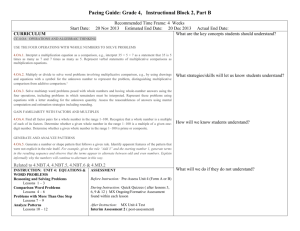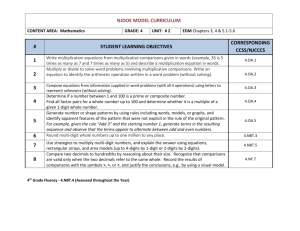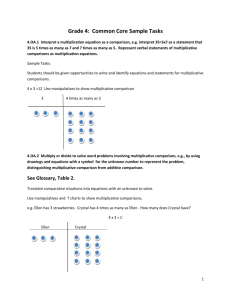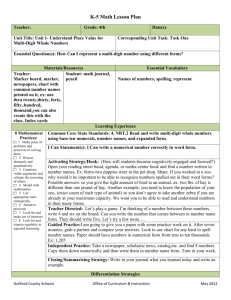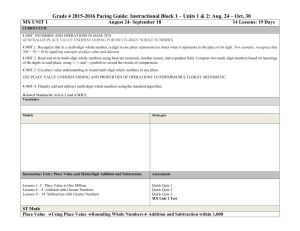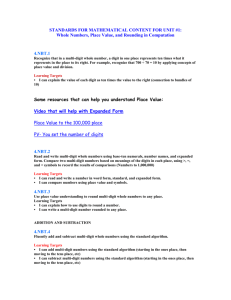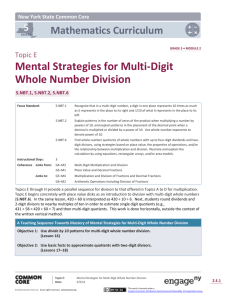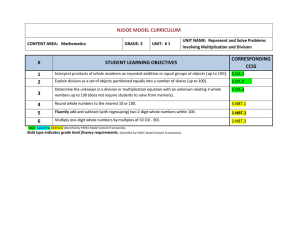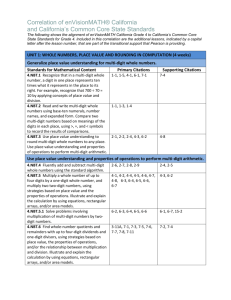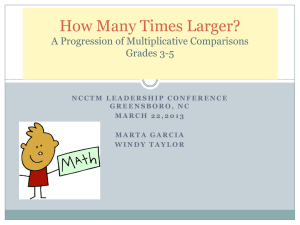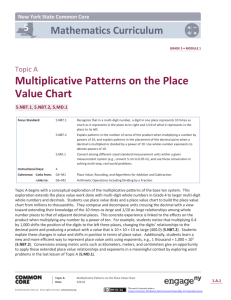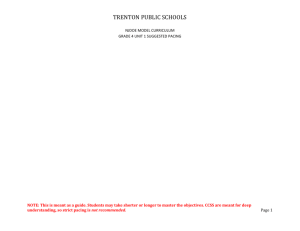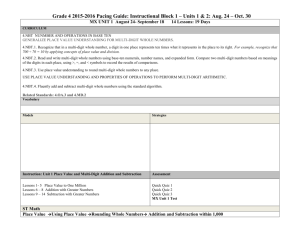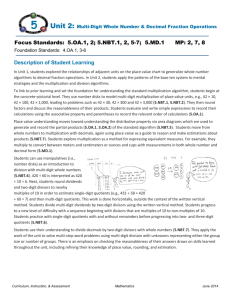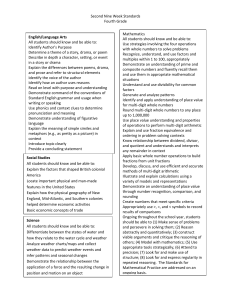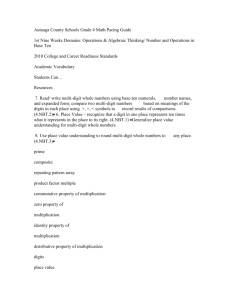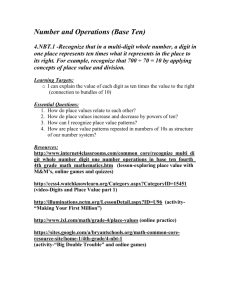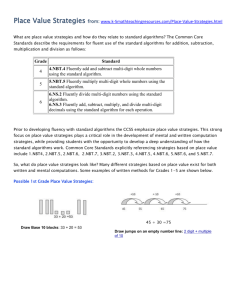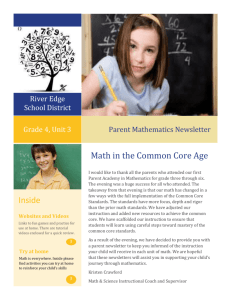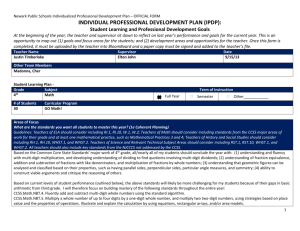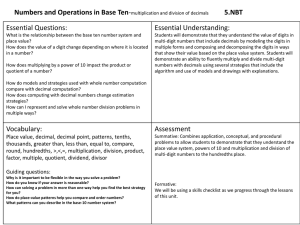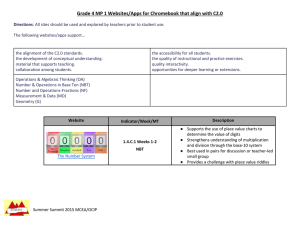Word
advertisement
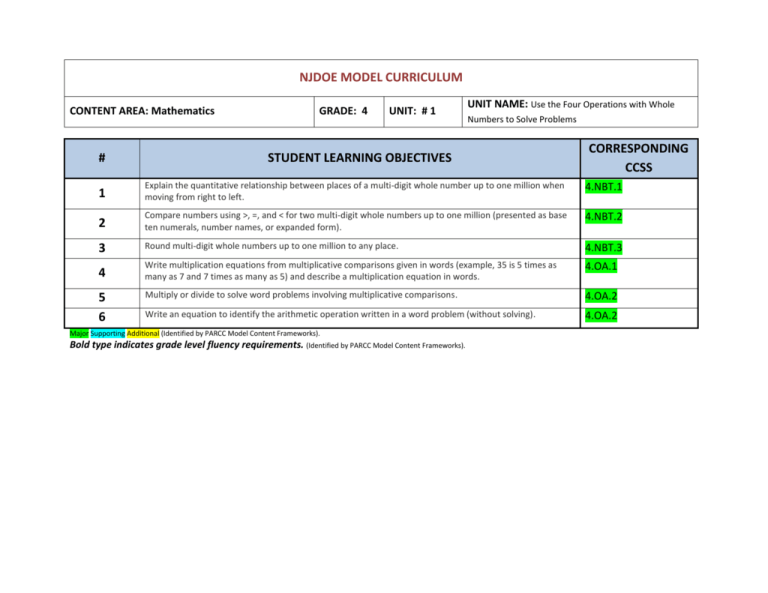
NJDOE MODEL CURRICULUM CONTENT AREA: Mathematics # GRADE: 4 UNIT: # 1 UNIT NAME: Use the Four Operations with Whole Numbers to Solve Problems STUDENT LEARNING OBJECTIVES CORRESPONDING CCSS 1 Explain the quantitative relationship between places of a multi-digit whole number up to one million when moving from right to left. 4.NBT.1 2 Compare numbers using >, =, and < for two multi-digit whole numbers up to one million (presented as base ten numerals, number names, or expanded form). 4.NBT.2 3 Round multi-digit whole numbers up to one million to any place. 4.NBT.3 4 Write multiplication equations from multiplicative comparisons given in words (example, 35 is 5 times as many as 7 and 7 times as many as 5) and describe a multiplication equation in words. 4.OA.1 Multiply or divide to solve word problems involving multiplicative comparisons. 4.OA.2 Write an equation to identify the arithmetic operation written in a word problem (without solving). 4.OA.2 5 6 Major Supporting Additional (Identified by PARCC Model Content Frameworks). Bold type indicates grade level fluency requirements. (Identified by PARCC Model Content Frameworks). NJDOE MODEL CURRICULUM CONTENT AREA: Mathematics Code # GRADE: 4 UNIT: # 1 UNIT NAME: Use the Four Operations with Whole Numbers to Solve Problems Common Core State Standards 4.NBT.1 Recognize that in a multi-digit whole number, a digit in one place represents ten times what it represents in the place to its right. For example, recognize that 700 ÷ 70 = 10 by applying concepts of place value and division. 4.NBT.2 Read and write multi-digit whole numbers using base-ten numerals, number names, and expanded form. Compare two multi-digit numbers based on meanings of the digits in each place, using >, =, and < symbols to record the results of comparisons. 4.NBT.3 Use place value understanding to round multi-digit whole numbers to any place. 4.OA.1 Interpret a multiplication equation as a comparison, e.g., interpret 35 = 5 × 7 as a statement that 35 is 5 times as many as 7 and 7 times as many as 5. Represent verbal statements of multiplicative comparisons as multiplication equations. 4.OA.2 Multiply or divide to solve word problems involving multiplicative comparison, e.g., by using drawings and equations with a symbol for the unknown number to represent the problem, distinguishing multiplicative comparison from additive comparison. Major Supporting Additional (Identified by PARCC Model Content Frameworks). Bold type indicates grade level fluency requirements. (Identified by PARCC Model Content Frameworks).
